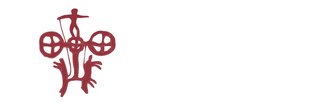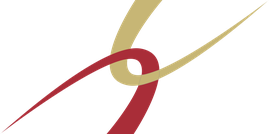Gods, Heroes and Cults in Bronze Age Central Asia
Reflexion, Transformation and Continuity of Old Near Eastern Beliefs

The research topic of this project is the examination of the representations of the gods and supernatural mixed beings of the Central Asian Bronze Age urban culture (Bactrian Culture) and the related cults and rites regarding their origin, development, parallels and their survival into later times. This investigation will help to develop models of adaption and modification of religious beliefs. This work include a parallel analysis of the previous and contemporary Iranian fourth-and third-millennium cultures as one can expect to find here the precursors of the Bactrian gods, mixed beings, heroes and myths. In order to work out models of transfer, modification and emanation of religions, this project will analyse mainly two cultures strongly related to one another, the Bronze Age urban Bactrian Culture of Central Asia (ca. 2500/2400-1800/1700 BC) and the Southeast-Iranian so called Kerman Culture (ca. 2800-2000 BC) with regards to commonalities and differences in their religious beliefs. The antecedents of the Kerman Culture also have to be considered, such as the Proto-Elamite Culture (ca. 3000-2600 BC) or the Luristan art of 4th mill. BC, because it might be very well possible that some roots of religious beliefs go back into far older times. Time and space of investigation The investigation is focussed on two main geographical areas: 1. the region of the Bronze Age Bactrian Empire which included the regions of northern Afghanistan, southern Uzbekistan and Southern Turkmenistan, i.e. those areas which offered possibilities for sedentary life and the development of urban cultures and 2. the regions of Southwest-Iran (Khuzistan, Luristan, Fars) and Southeast-Iran (Kerman), which are those areas where the roots of Central Asian gods, rites and myths can most probably be found. The scope of investigation will also extend to the greater area of the Iranian plateau, especially Sistan and Baluchistan, where some further antecedents of Bactrian cults and gods are to be found, as well as to Anatolia, as it seems evidence could be found here for the emanation of Bactrian Culture to the west at the beginning 2. mill. BC. Chronologically the work will focus on the time span between 4000-1800 BC, i. e. the period of the emergent urban cultures in Iran and Central Asia, with the aim of finding out the starting points of depictions in Bactrian art. Special emphasis will be on the phase between 2500 and 2100 BC., that time, when the main influences from Iran came to Central Asia via long distance trade connecting Central Asia, Iran and Mesopotamia and when the Bactrian Culture arose. Older representations of Chalcolithic and Neolithic art will be examined in some cases, too. Material basis The material basis of the planned investigation consists of archaeological finds with pictorial representations as there are no known extent written sources relevant to the research topic. These finds are for the Iranian cultures: seals and seal impressions as well as pottery paintings from Luristan, seals and seal impressions, statues and reliefs from the Proto-Elamite culture, carved steatite vessels and weights, stone slabs, gaming boards, pins, vials, seals and seal impressions, sculptures, terracotta figurines, pottery and wall paintings. Material from Bactria includes mainly seals, weapons, stone boxes, gold, silver and copper vessels with relief decoration, vials and pins, composite stone figurines, terracotta figurines, wall paintings, mosaics and cultic vessels.
1. A catalogue compiling the Bactrian artefacts with pictorial representations as well as the corresponding contemporary and preceding Iranian artefacts. 2. An investigation of the semantic meaning of the pictorial representations 3. The definition of the gods, their different anthropomorphic, zoomorphic and an-iconic appearances, their attributes and attribute animals and their action spears 4. The reconstruction of the related cults and rites as well as an creation of a typology of the mixed beings and heroes to illuminate the religious and mythological beliefs 5. The comparison of these cults and sacred figures with those of surrounding contemporary and previous cultures to discover possible roots of these religious beliefs. 6. Reconstruction of the roots and chronology of spreading of religious and mythological ideas from Iran or the Greater Iranian Plateau and the Indus valley into Central Asia as well as defining ways of continuity of older religious beliefs which in some cases seem to go back to Neolithic and Chalcolithis beliefs of the first sedentary agricultural communities in some cases. 7. Trying to define models for typical processes of Central Asian religious history.

